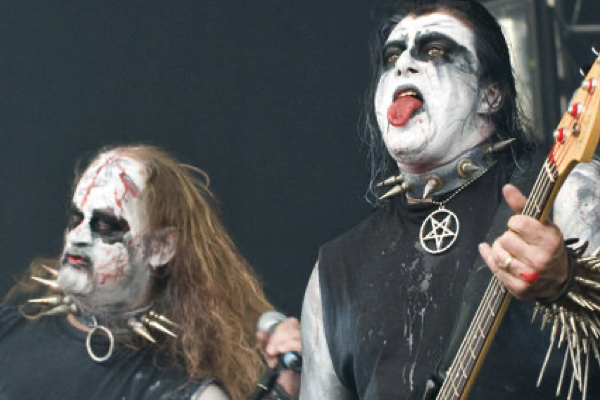Just like fashion, music also goes through phases of revival. Certain concepts are taken from their original context and presented in the modern age. While doing so, the new flavours are also brought to the fore. In recent times, you might’ve witnessed the likes of Savages fiercely holding their torch high. You might’ve also noticed the ever-increasing bands under Topshelf Records.
Some of these bands, such as Best Coast and Dum Dum Girls have received praises as well as rebukes. Much of the rebukes they got were the result of their fuzzy lo-fi sound. Trends in music are often cyclic. It doesn’t come as a surprise, therefore, when you see legions of fans admiring a least expected genre. Many were stunned by the sudden adoration for a genre of metal called black metal.
The best albums of 2013 were listed by the biggest music publications in the world. Among them was a black metal album called Sunbather from Deafheaven. The black metal album The Satanist from Behemoth was given five stars out of five by The Guardian. The ads from Apple also promoted a black metal album.
Unless you’re a black metal fan, you’ll wonder where the world is heading to, upon seeing all of these. The genre that was once seen as alienating has now found a new life. A whole lot of people have begun paying attention to it. Let’s now take a look at its history.
Dark origins
The term ‘black metal’ originated in 1982. It came from the album of the same name from the English band, Venom. There were a few bands that are now considered a part of the ‘first wave’ of black metal. Their music sounded more like speed and thrash metal. Among these bands were Venom, Mercyful Fate, and Bathory.
These bands stood out from the rest owing to their lyrical and thematic content. Their themes were often Satanic and anti-Christian. Members of these bands adopted morbid personas, monikers, and corpse paint. Quorthon, the vocalist of Bathory, became quite popular for his screeching rather than singing.
The first wave of black metal set the tonal quality and character of the black metal bands to come. The music had to be extremely dark with heavily distorted guitars, lo-fi production, fast drums, and anti-Christian.
The genre faded away in the late 1980s owing to the increasing popularity of death metal. This new genre of metal was faster, hyper-aggressive, more chaotic, and featured growled vocals. Black metal sounds low-pitched, while death metal has a higher pitch.
The early 1990s
The early 90s saw the second wave of black metal emerge in Norway. The bands that were a part of this wave included Mayhem, Immortal, Darkthrone, and Gorgoroth. A distinct, legitimate sub-genre was developed out of the sound and culture of the forbears of black metal. Such an evolution of black metal took it to the next level.
The new avatar of this genre was misanthropic and nihilistic. At times, the tracks were so raw that they seemed unlistenable to many. Instead of emotional gratification, they were focused on creating dark and moody atmospheres.
Adherence to the ideology
In the second wave, there was a greater level of commitment to satanism. While the earlier bands only used satanism for shock value, the newer ones wanted to be totally ungodly. Among the early Norwegian black metal bands, warped philosophical ideologies were rampant. This often invited the ire of international media.
Some of the bands were so horribly misguided that they were completely immersed in the culture. They explicitly expressed their desire to spread hatred, fear, and sorrow. This resulted in more than 50 arsons of Christian churches during the period between 1992 and 1996 in Norway. One particular incident of extremities is the suicide of Mayhem’s vocalist, Per Yngve Ohlin.
He was found by guitarist Euronymous with slit wrists and throat, and a shotgun wound to his head. Euronymous, instead of calling the police immediately, did something utterly disgusting. He went to a shop and brought a disposable camera. He used it to take some pictures of his former bandmate’s dead body. One of them was used as an album cover!
Spawning of other black metal bands
Black metal was considered to be a purely underground genre for a long time. It had slowly begun to creep out into the consciousness of the general metal scene. Although the Norwegian black metal scene was plagued with notoriety, it was surely appealing to some parts of Europe. Soon, the genre was embraced by some in Germany, the United Kingdom, and France.
During this period, the winds of this genre were changing direction. Just like the American death metal, the European black metal bands caught the attention of big-time metal labels. This rising commercialization of black metal was hated by fans of the genre. The purists of what was once a fiercely underground movement were certainly not happy.
They were angry that the death metal bands were going to Nuclear Blast, Century Media and other major labels. While certain black metal bands claimed to be true to their genre, they pursued a wider musical palette. Despite this, black metal continued to exist in their DNA. The most commercially successful band in black metal history is Dimmu Borgir.
They also went on to add an operatic edge and cleaner vocals. Enslaved and Emperor changed their direction towards progressive metal. The infamous Varg Vikernes made use of minimalist black metal qualities to introduce ambient elements. He even went fully instrumental while serving time in prison. At the time, he didn’t have any access to traditional rock instruments.
At one point, Blut Aus Nord realized that industrial music and black metal could go together. Deathspell Omega and Ulver decided to let their avant-garde tendencies loose. Satyricon went full-on hard rock as well. All these bands were rooted in black metal, but realized that murdering rivals and burning churches didn’t suit them.
Expanding their sound was definitely against the principles of black metal. Many such bands helped in expanding black metal beyond its confines. Without their efforts, we wouldn’t have gotten a band like Deafheaven. We also wouldn’t have gotten symphonic black metal, blackened death metal, progressive black metal, and other sub-genres.

